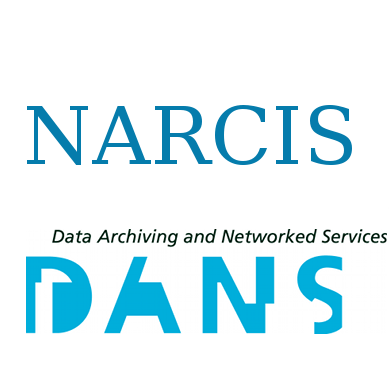Focal point
Location
National Academic Research and Collaborations Information System (NARCIS) is the main Dutch national portal for those looking for information about researchers and their work. NARCIS aggregates data from around 30 institutional repositories. Besides researchers, NARCIS is also used by students, journalists and people working in educational and government institutions as well as the business sector.
NARCIS provides access to scientific information, including (open access) publications from the repositories of all the Dutch universities, KNAW, NWO and a number of research institutes, datasets from some data archives as well as descriptions of research projects, researchers and research institutes.
This means that NARCIS cannot be used as an entry point to access complete overviews of publications of researchers (yet). However, there are more institutions that make all their scientific publications accessible via NARCIS. By doing so, it will become possible to create much more complete publication lists of researchers.
In 2004, the development of NARCIS started as a cooperation project of KNAW Research Information, NWO, VSNU and METIS, as part of the development of services within the DARE programme of SURFfoundation. This project resulted in the NARCIS portal, in which the DAREnet service was incorporated in January 2007. NARCIS has been part of DANS since 2011.
DANS - Data Archiving and Networked Services - is the Netherlands Institute for permanent access to digital research resources. DANS encourages researchers to make their digital research data and related outputs Findable, Accessible, Interoperable and Reusable.
Members:
Resources
Displaying 636 - 640 of 1863Single women, land and livelihood vulnerability in an communal area in Zimbabwe
Steekmuggen in de waterbergingsgebieden Peize en Roden : monitoring 2009
In de periode mei-augustus 2009 zijn steekmuggen gemonitord in de waterbergingsgebieden Peize en Roden-Norg; larven en poppen op 40 locaties en volwassen steekmuggen op acht locaties. Beide levensstadia zijn gemonitord volgens een gestandaardiseerde methode. De monitoring liet zien dat er momenteel geen sprake is van het optreden van eventuele overlast van steekmuggen. Larven en poppen van huissteekmuggen (Culex) zijn in plas-dras situaties aangetroffen.
Capacity building for landscape ecological research : at the State University of Mato Grosso UNEMAT, Brazil
The state of Mato Grosso in Brasil faces environmental challenges since agricultural developments threaten biodiversity and other environmental values. The mission of the state university of Mato Grosso (UNEMAT) is to contribute to the knowledge needed for the sustainable development of the state. However, there is a need for academic capacity building. Collaboration with Wageningen University intends to improve the quality of the education and science especially concerning landscape ecological research.
Ruimte voor Biodiversiteit
Duurzame ontwikkeling van de Groene en Blauwe Ruimte in een veranderende wereld. Dat is het centrale thema van het kennisbasis onderzoekprogramma KB1. De groene en blauwe ruimte vormen bij uitstek het Wagenings domein. Het onderzoek is gericht op zowel Nederland als op deltagebieden elders in de wereld. Aan de hand van ontwikkelingen rond landgebruik, verstedelijking, klimaat, maatschappelijke organisatie en besluitvorming wordt nagegaan welke kennisvragen er leven over de groen-blauwe ruimte en hoe men deze vragen met een wetenschappelijke aanpak kan beantwoorden.
Verkenning van de milieueffecten van lokale productie en distributie van voedsel in Almere : energieverbruik, emissie van broeikasgassen en voedselkilometers
Een van de toekomstige ontwikkelingsgebieden, Almere Oosterwold, is ongeveer 4.000 ha groot. De landbouw in het toekomstige Almere Oosterwold wordt door Almere gezien als een potentiële drager van de duurzaamheidprincipes van de stad. De leidende vraag is in welke mate de landbouw in Almere Oosterwold kan bijdragen aan een duurzame voedselvoorziening van toekomstig Almere. Uitgangspunt hierbij is dat Almere Oosterwold in 20% van de voedselbehoefte van toekomstig Almere met ca. 350.000 inwoners voorziet. Drie toekomst scenario’s voor lokale voedselproductie in Almere zijn doorgerekend.


